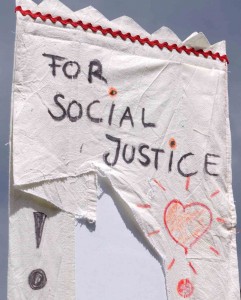European solidarity at a crossroads
The economic crisis affecting the European Union since 2008 has put European solidarity to a considerable endurance test. Governments and EU institutions have spoken out in favour of providing help to member states most severely hit by the crisis. Still, fiscal solidarity has its limits, and EU policies are often perceived as ‘solidarity light’, if not as unilateral austerity measures unrelated to any norms of reciprocity or solidarity. Moreover, European solidarity is challenged by populist parties and xenophobic groups who have demonstrated their capacity to mobilise constituencies against vulnerable groups, other European countries and the EU as such.
While pessimists might want to emphasise the erosion of solidarity at the level of governments and citizens, various signs points to a less gloomy outlook. At the individual level, we learn from opinion polls that citizens do still believe in the responsibility to help fellow Europeans and European countries in need. At the level of civil societies, numerous local groups and transnational initiatives provide help, such as barter clubs, credit unions, time banks, alternative social currencies, cooperatives, free health clinics, citizen’s self-help groups and social enterprises. Obviously, the crisis has not only challenged established forms of European solidarity but also triggered new forms of support and commitment.
European solidarity under critical assessment
In the light of these observations, a nuanced and in-depth assessment of European solidarity at times of crisis is of key importance for scientists, policy-makers, stakeholders and society. TransSOL was dedicated to this objective, guided by the following questions:
- To what extent are European citizens not only ready to help other Europeans but actually involved in acts of individual and collective solidarity?
- What can we say about the specific ‘constituencies’ of European solidarity in terms of socio-demographic traits and their spatial distribution across regions and countries? And how strongly do Euro-sceptical citizens oppose European solidarity?
- What are the detrimental or beneficial factors of the immediate environment (social, economic, legal, political and cultural opportunities and constraints) of the various countries that impinge on European solidarity at the individual level?
- How strongly developed is the field of civil society organisations and initiatives rallying for European solidarity, and how do they mobilise and organise civic engagement?
- Does European solidarity feature in the mass media, and which ideas, norms and claims are promoted in the various countries at times of crisis?
- Which picture emerges when focussing on European solidarity not in abstract terms, but in regard to vulnerable groups like the unemployed, migrants and refugees, and disabled people? Is solidarity limited to specific countries and groups?
- What can we learn from civic practices and initiatives for European solidarity? Are there particularly successful role models, policies and legal instruments that have been shown to foster European solidarity?
Overall, TransSOL strived to transcend available knowledge on solidarity. Previous research has privileged the question of whether citizens support public policies that redistribute wealth within and across countries, thus focussing on the ‘vertical’ relationship between citizens and state-led measures of institutionalised solidarity. Our aim instead was to study the relations of solidarity amongst citizens, civil society organisations and the public sphere across countries. Hence, the focus of TransSOL was primarily on the transnational dimension of European solidarity.


